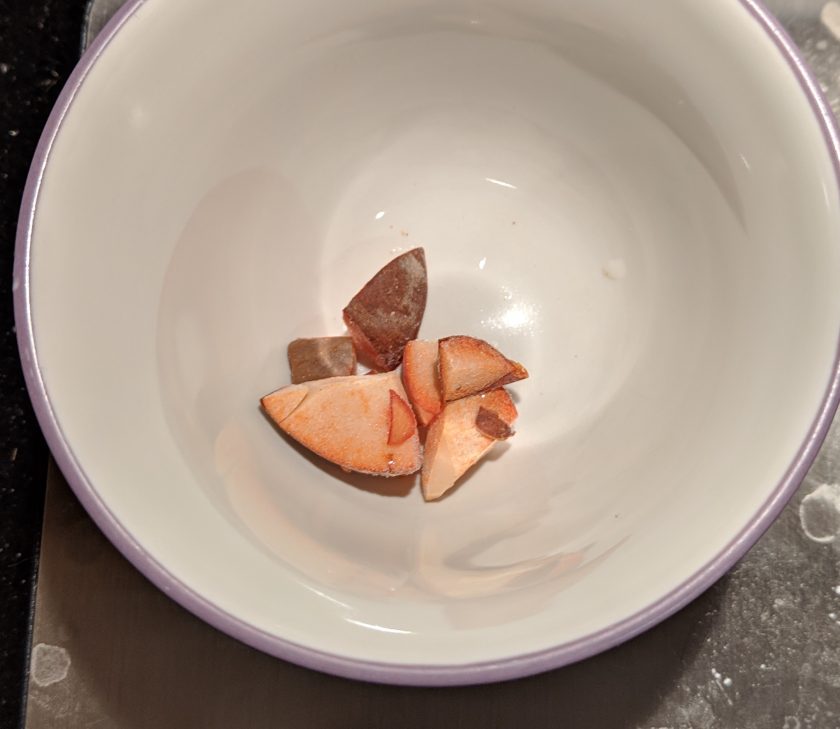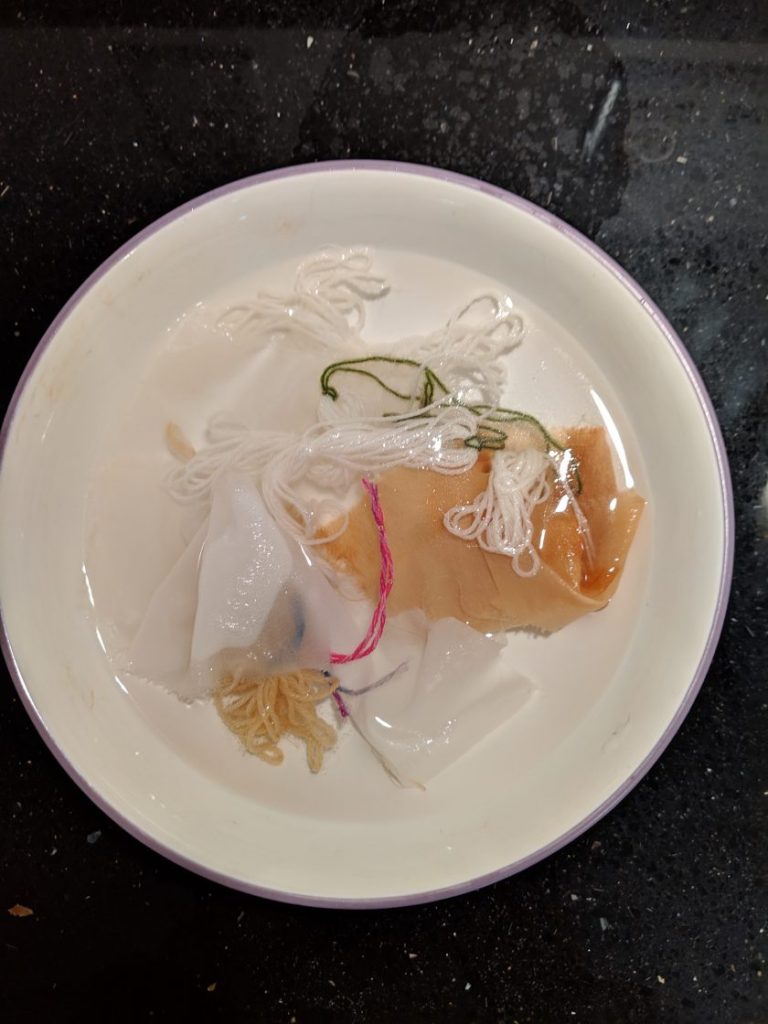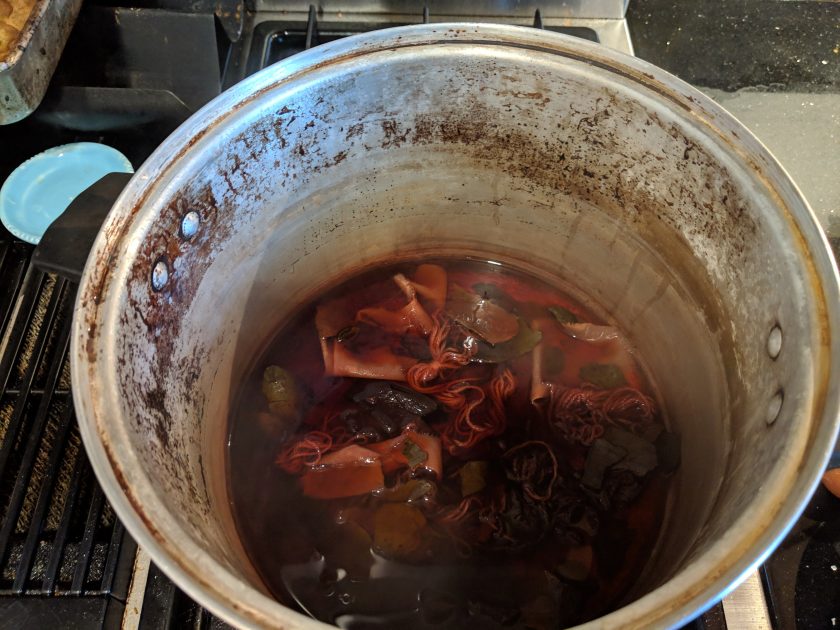One thing I love about natural dyes is that they turn up in the most unexpected places. For instance, would you ever guess that the pits and skins of avocados can yield light pink and peach colors? I started saving the pits and skins from the avocados we ate so I could start experimenting with them. Here are my results.

The first thing I did was to clean them really well. I scraped every last bit of avocado that I could, then washed everything with dish soap. I chopped the pits into pieces, before tossing everything in the freezer.

I didn’t want to bother mordanting plant fibers, so I only used silk and superwash wool/nylon sock yarn. I left some samples unmordanted, I mordanted some with alum, and I mordanted some with iron.

After reading online about using avocado as a dye, one recommendation that I found was to not overheat the dye as that can make it more brown. I tried to keep everything at just a simmer. I used twice the dry weight of the fiber, simmered in the dye bath for 1 hour before adding the samples. I then simmered for an additional hour and left it to cool overnight.

I got more peach from the skins, and more pink from the pits, but some people say that avocado can have a lot of variation, depending on what type they are and where they came from. Those of us who don’t have our own avocado tree are pretty much unable to control for those factors, so my samples may only be accurate for this particular batch of avocados.

I really like how the avocado looks on the silk. I actually love the color with the iron mordant. The pictures don’t really do it justice. It’s sort of a gray-ish, pink-ish brown, but with a lot of dimension. I really want to try dyeing with the avocado and then splashing with iron solution, which should produce the darker color wherever the iron lands.

I’m less in love with the color on the yarn. Although the color is darker (probably because the wool is superwash), it seems less pretty. I may try some more samples in the future with an untreated wool.
I’m not sure what my next dyeing experiment will be, but spring is here, so soon there will be more plants to use!
